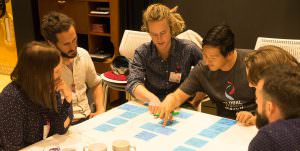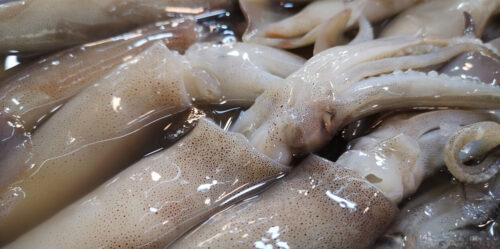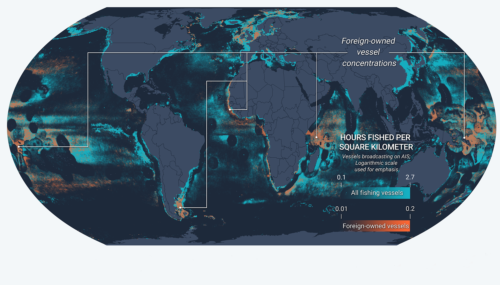During the first two weeks of May, a team of Global Fishing Watch developers, designers and project managers gathered in Europe with members of our user community to teach, learn and brainstorm improvements and new uses for our online map and data.
Over the course of four day-long workshops, we worked with representatives from the spectrum of fisheries stakeholders—from marine scientists, data scientists, government agencies, conservation advocates and decision makers to seafood management advocates, commercial fishing fleet representatives, and journalists. Representatives from safety-at-sea stakeholders, commercial fishing vessel database providers, and a seafood sustainability certifier also joined us to learn about our platform and data products and to help us contribute to the work they do.
“These workshops are a great opportunity to hear first-hand how Global Fishing Watch is really being used,” said our CEO, Paul Woods, after our workshops London. “In just two days we learned a ton about the features we can build to serve our users’ needs, enough to keep us busy for a long time.”
“We saw a lot of enthusiasm and a great response to our platform and data,” said Program Manager Samantha Emmert, seen here welcoming workshop participants.
Google London hosted us on May 4 and 5, and Oceana EU hosted on May 8 and 9. Breakout sessions facilitated meaningful guided tours of the map with feedback from participants who had extensive experience with the tool as well as those who had never used it before. Small groups focused on understanding the experience of our users and developing ways to improve our platform to meet their needs. We dove into everything from basic navigation of the map to a deep exploration of the data that support it.
“People are very excited for us to release our fishing effort data,” said Research Program Director David Kroodsma. “There is a lot of demand for them, and there are many opportunities for collaboration.”
Suggestions for future research projects were plentiful and included the use of Global Fishing Watch to understand fisheries as socio-ecological systems, evaluate tuna stocks to advise RFMOs, and better understand seabird bycatch in the Mediterranean.

Ideas for new features were also plentiful such as incorporating smartphone vessel tracking with iVMS and an app that allows you to upload and match photos and vessel ID information to our vessel list. Another idea was to link catch data to an area or country for which we have very good fishing data – such as Iceland.
“It is really uplifting to see how many people are dedicating themselves to saving the oceans,” said Paul, “and how much potential there is for better data to make everyone’s work more effective. It inspires us to do more.”

